Impact of Climate Change on Wildlife Species
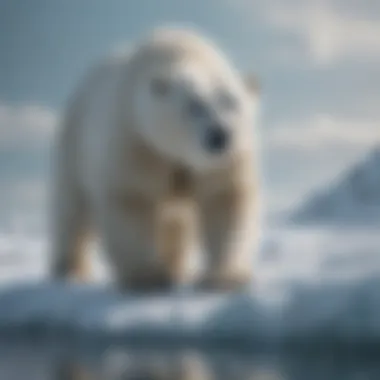
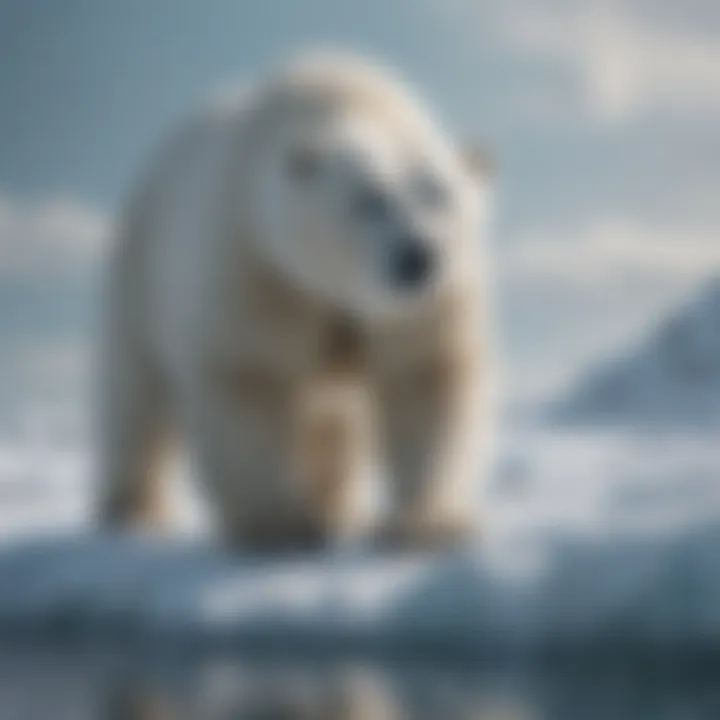
Overview of the Topic
Climate change presents a significant threat to wildlife across the globe. It involves changes in temperature, precipitation, and the overall climate system that drastically affect ecosystems where wildlife thrive. Species are adapting to these shifts, but not all can cope quickly enough. The consequences of climate change lead to shifts in habitats and resources, ultimately impacting the survival of various species.
For example, polar bears in the Arctic find their ice habitat melting, which affects their hunting practices. Similarly, coral reefs face bleaching due to warmer ocean temperatures, leading to the decline of many aquatic species. Understanding how climate change affects wildlife is crucial for developing effective conservation strategies.
Current Status and Challenges
The current state of wildlife is alarming. Many species are experiencing population declines, and numerous ecosystems are becoming unstable. Studies suggest that rising temperatures are driving species toward extinction faster than anticipated.
Key Challenges:
- Habitat Loss: Increased urbanization and agricultural expansion often lead to loss of natural habitats.
- Changing Migration Patterns: Many migratory species are arriving at their destinations too late or too early, impacting reproduction and survival rates.
- Resource Scarcity: As climate conditions change, resources like food and water become scarce, leading to competition among species and further decline.
Environmental advocacy groups stress the urgent need for action. Without intervention, the future of many species hangs in the balance.
Sustainable Solutions
To counteract these challenges, sustainable practices are essential. Conservationists are working on various approaches to protect wildlife and their habitats.
Effective Solutions:
- Protected Areas: Establishing national parks and wildlife reserves can help safeguard critical habitats from human interference.
- Restoration Projects: Initiatives aimed at restoring degraded ecosystems contribute to biodiversity and help species thrive.
- Community Involvement: Engaging local communities in conservation efforts fosters a sense of stewardship and ensures sustainable practices.
For instance, the reforestation efforts in Brazil show how effective management can revitalize ecosystems and protect habitat for various wildlife.
Impact and Importance
The impact of climate change on wildlife extends beyond individual species. It disrupts food webs, alters ecosystem services, and affects human communities that depend on healthy ecosystems.
"The loss of biodiversity is one of the most significant impacts of climate change, affecting not only wildlife but also human populations relying on these ecosystems for sustenance and well-being."
Importance of Conservation Efforts:
- Biodiversity Maintenance: Preserving diverse species ensures ecosystem resilience against climate challenges.
- Future Generations: Protecting wildlife today secures the natural heritage for future generations.
- Ecosystem Services: Healthy ecosystems provide clean air, water, and resources essential for human survival.
Prologue
The subject of climate change and its effects on wildlife is urgent. Today, global ecosystems face unprecedented challenges. Understanding these effects is not just an academic exercise; it is critical for the survival of many species and the overall health of our planet.
Biodiversity is under threat. Changes in climate patterns disturb the delicate balance that exists within ecosystems. This leads to adverse consequences for many organisms and their habitats. The importance of recognizing how wildlife is impacted cannot be overstated. Loss of biodiversity can lead to the collapse of ecosystems and, consequently, threaten human existence as well.
Moreover, the physiological changes that result from climate change have grave implications. Animals are adjusting their behaviors, diets, and breeding patterns in response to new environmental conditions.
Considerations must also be given to the human-animal interaction. As habitats shift or diminish, wildlife is forced into closer proximity with human populations. This creates conflicts, risking both human safety and animal welfare.
"The impact of climate change on wildlife is a multi-faceted problem that demands immediate attention and action."
In this article, we will explore various facets of the issue. By examining the physiological and behavioral shifts in wildlife, we highlight the immediate need for conservation efforts. Through careful analysis, we aim to provide insights that can help shape policies and practices focused on protecting biodiversity. Understanding these elements deeply is essential to drive effective conservation strategies.
Understanding Climate Change
Understanding climate change is critical for comprehending its ramifications on wildlife. The term encompasses a range of phenomena affecting global weather patterns, including temperature rises, altered precipitation rates, and extreme weather events. This section will clarify essential elements of climate change and how they relate to wildlife.
Definition and Causes
Climate change refers to significant alterations in temperature, precipitation, and wind patterns over extended periods. Key causes of climate change include the greenhouse effect, where gases such as carbon dioxide and methane trap heat in the atmosphere. These gases arise primarily from human activities like burning fossil fuels and deforestation.
Several natural processes also contribute to climate change, including volcanic eruptions and variations in solar radiation. However, the rapid pace of the current changes is largely attributed to anthropogenic factors, making it imperative to recognize and address these driving forces.
Global Warming and Greenhouse Gases
Global warming, a subset of climate change, specifically refers to the increase in Earth's average surface temperature. This rise results from heightened concentrations of greenhouse gases in the atmosphere. The Intergovernmental Panel on Climate Change (IPCC) reports that human activity has increased these levels significantly over the past century.
The effects of global warming are far-reaching, influencing not just temperature but also the ecosystems that wildlife inhabits. Changes in temperature can affect the availability of food and water sources for various species.
The Role of Human Activity
Human activity plays a central role in climate change. Actions such as industrialization, waste disposal, and land conversion have substantially increased greenhouse gas emissions, further intensifying global warming. For instance, the expansion of agriculture often leads to deforestation, contributing to habitat loss for countless species.
Moreover, urbanization creates localized heat islands, exacerbating thermal stress in wildlife. The over-extraction of resources, including water and minerals, also unsettles natural ecosystems. Understanding these human impacts is crucial for devising effective strategies to mitigate climate change effects on wildlife.
"The rate of climate change is unprecedented in human history, presenting significant threats to biodiversity."
In summary, understanding climate change involves analyzing its definitions, causes, and the undeniable influence of human activity. Each part interlinks with the broader implications for wildlife. Addressing these needs proper knowledge and awareness of the phenomenon.
Impact on Biodiversity
Biodiversity is essential for maintaining ecosystem health and resilience. The effects of climate change on biodiversity are multifaceted, impacting species survival, ecosystem functions, and overall environmental stability. Biodiversity loss can lead to significant consequences for ecosystems, including reduced productivity, weakened resilience to environmental changes, and diminished capacity to provide essential services such as clean air and water.
The interdependence of species means that the decline of one can trigger a cascade of effects throughout the ecosystem. It is critical to recognize that each species plays a unique role, contributing to the complexity and robustness of its habitat. As climate change alters conditions such as temperature and precipitation patterns, species may struggle to adapt, resulting in shifts in biodiversity across multiple ecosystems.
Species Extinction Rates
Species extinction rates are accelerating as climate change continues to exert pressure on habitats and wildlife. According to the Intergovernmental Panel on Climate Change (IPCC), species extinction could reach one million species globally. These rates are alarming, as they highlight an impending crisis for many taxa that are unable to adapt to rapid environmental changes. Increased temperatures alter breeding and feeding patterns, often leading to mismatched interactions among species.
For instance, the polar bear is experiencing an increase in extinction risk due to the melting of Arctic sea ice. This loss of habitat impact both their hunting ability and reproductive success. Species that cannot migrate or adjust their life cycles to changing conditions may face inevitable decline. Scientists emphasize the need for urgent conservation strategies to mitigate these ongoing threats.
Threatened and Endangered Species
Many species are now classified as threatened or endangered due to climate change. Factors like habitat destruction, changing food sources, and altered breeding seasons contribute to this increasing classification. Amphibians, for example, are particularly vulnerable, with many species declining because of shifts in temperature and moisture levels impacting their delicate ecosystems.
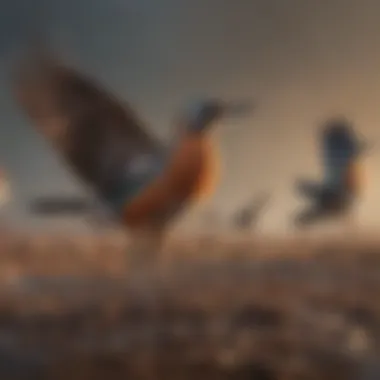
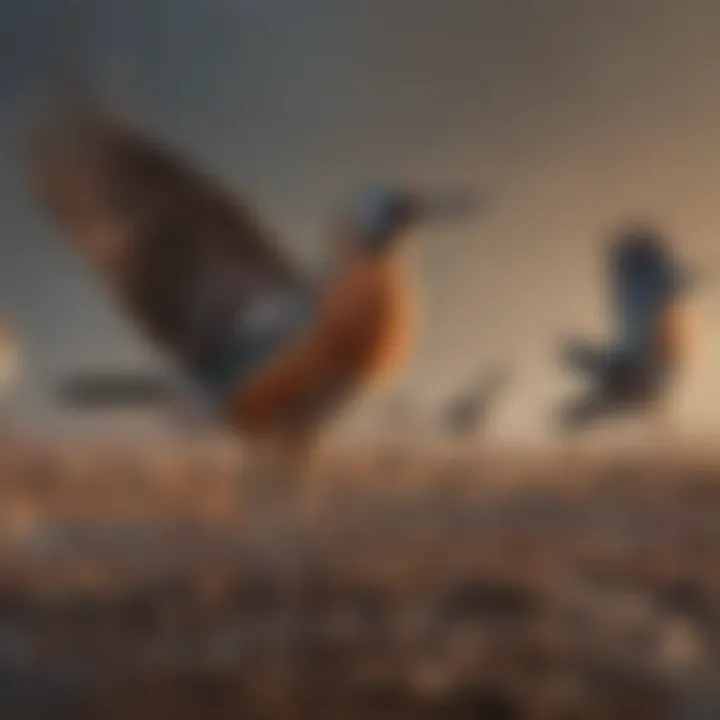
In the marine environment, coral reefs display severe susceptibility to ocean warming and acidification, leading to widespread coral bleaching. This phenomenon results in the loss of habitat for numerous marine species, compromising entire marine ecosystems. Conservation efforts are vital, focusing on protecting these vulnerable species and their habitats, in order to maintain diverse ecosystems.
Loss of Habitat
Habitat loss is one of the most significant impacts of climate change on wildlife. Rising temperatures and changing precipitation patterns result in the degradation or complete loss of crucial habitats. Wetlands, forests, and grasslands are particularly susceptible to such changes. The destruction of habitats leads to fragmentation, making it difficult for species to move and adapt to climate shifts.
Wildlife often struggles to find suitable habitats that meet their needs for food, shelter, and reproduction. Consequently, many species are forced into smaller areas, increasing competition for resources. Marine species also face habitat loss as ocean temperatures rise, and sea levels threaten coastal areas. It is prudent to prioritize habitat conservation and restoration in order to ensure the survival of diverse species.
"Biodiversity is not just about the number of species; it is about the interactions and relationships that sustain ecosystems. Without action, the loss of these connections can have dire consequences for all life forms."
Physiological Effects on Wildlife
Changes in Metabolism
Changes in climate can significantly affect wildlife metabolism. For instance, an increase in temperature can accelerate metabolic rates for some species, especially ectotherms like reptiles and amphibians. This acceleration can lead to a higher demand for energy, complicating survival, especially if food resources become scarce due to shifting ecosystems. Additionally, while some species may benefit from faster metabolism, others may struggle to maintain their energy levels, leading to weakened bodies and decreased reproductive success.
"Higher temperatures impact metabolic processes, influencing the balance between energy intake and expenditure."
Reproductive Challenges
Climate change poses considerable threats to the reproductive success of various wildlife species. Factors like changing seasonal cues can misalign breeding times with optimal conditions for offspring survival. For instance, temperature variations can lead to egg-laying occurring at suboptimal times, thereby reducing hatchling viability. In birds, altered migration patterns due to climate may also disrupt their mating systems, impacting population dynamics. Less favorable environments for raising young can lead to lower survival rates and might push some species towards extinction.
Health and Disease Vulnerabilities
The health of wildlife is intricately linked to climate factors. As temperatures rise and precipitation patterns shift, the prevalence of diseases can increase. Warmer temperatures may extend the range of vectors such as mosquitoes, leading to outbreaks of diseases like West Nile Virus or heartworm in mammals. Furthermore, climate change can lead to stress in wildlife, making them more susceptible to diseases. Increased competition for dwindling resources can weaken immune responses, further compounding health issues among populations.
In summary, the physiological impacts of climate change on wildlife are multifaceted and require extensive investigation. Continued research is essential to understand these intricate dynamics, aiding conservation efforts aimed at mitigating adverse effects on biodiversity.
Behavioral Changes in Wildlife
Behavioral changes in wildlife are a crucial aspect of understanding the impacts of climate change. As animals respond to shifting environmental conditions, these behavioral adaptations reflect their struggle for survival. It is vital to explore these changes as they encompass feeding habits, migration patterns, and social structures within various species.
The alteration in behavioral patterns can lead to significant ecological consequences. Wildlife must adapt quickly as habitats transform, food sources become scarce, and climate conditions vary. Failure to adapt could jeopardize not only individual species but also entire ecosystems, highlighting the interconnectedness of life.
Altered Feeding Patterns
Feeding patterns in wildlife often shift due to climate variations. Changes in temperature and precipitation can alter the availability of food sources. For instance, some animals may find their traditional food supply diminishing, leading to competition among species. Herbivores, such as deer or rabbits, might change their diets as certain plants become more or less abundant. Eventually, predators might have to adjust too, as their prey's availability is affected.
These changes in feeding habits can have cascading effects on the food web. For example, if a primary herbivore adapts its diet, it can impact plant populations and consequently affect all species that rely on those plants. This can lead to a chain reaction, disrupting the equilibrium of the ecosystem.
Migration Alterations
Migration is another critical area affected by climate change. Many species migrate to adapt to seasonal changes in temperature and food availability. When climate changes alter weather patterns, such as earlier spring thaws or later autumn freezes, migratory species might arrive at their destinations too early or too late.
Such timing mismatches can disrupt breeding cycles and affect survival rates. Birds, for example, may miss out on peak food availability if they arrive before insects emerge. This can lead to lower reproductive success and impact the population numbers of these species.
Social Structure Changes
Social structures in wildlife groups can also experience significant shifts due to climate change. Many species rely on social interactions for hunting, mating, and caring for young. If environmental changes put pressure on resources, animals may alter their group dynamics. Some species may become more solitary in their search for food, while others may band together for more successful hunting.
Studying these changes is vital for conservationists. Understanding how social structures are affected can help in the development of targeted strategies. For example, if certain species become more aggressive due to resource scarcity, management policies may need adjustments to ensure the balance within ecosystems.
"Adapting behavioral patterns is key to wildlife survival and the maintenance of ecological balance."
Species in Focus
The section "Species in Focus" delves into the intricate ways climate change impacts different groups of wildlife. Focusing on various species allows for a detailed examination of how specific environmental shifts affect their survival, behavior, and habitats. Understanding these effects is crucial not only for conservationists but also for policymakers and the general public. By highlighting selected species, we can better appreciate the broader implications of climate change on biodiversity.
Marine Species
Marine species are particularly vulnerable to climate change due to rising sea temperatures, acidification, and habitat degradation. Coral reefs, critical for many marine species, are suffering from bleaching events caused by warmer waters. As a result, many fish that rely on these ecosystems face declining populations. For instance, more than 50% of coral reefs globally are projected to be lost by 2050, affecting countless species that depend on these habitats for food and shelter. Moreover, migratory patterns in species like salmon are changing, as they seek cooler waters, further disrupting the marine food chain.
Terrestrial Mammals
Terrestrial mammals also experience significant challenges due to climate change. Species such as polar bears are struggling with diminishing ice habitats, leading to difficulties in hunting seals for food. As their hunting grounds shrink, their populations may decline further. Furthermore, changes in plant phenology affect herbivorous mammals, who rely on specific vegetation growth cycles. For example, an early spring could lead to mismatches in food availability for species such as deer, adversely affecting their reproductive success and overall health.
Bird Species
Birds are similarly influenced by climate change, with many species adjusting their migration patterns. Changes in temperature affect the timing of seasonal migrations, which can lead to food shortages in breeding grounds. Notably, many migratory bird species, such as the American robin, are arriving earlier in spring, creating mismatches with their primary food sources. Habitat loss also poses a significant threat, especially for birds that rely on specific environments, such as wetlands and forests, further imperiling their populations.
Amphibians and Reptiles
Amphibians and reptiles are highly sensitive to environmental changes, particularly in temperature and moisture. Species like the golden toad have already faced extinction due to climate-related habitat loss and disease. As amphibians often serve as indicators of ecosystem health, their declines signal broader environmental issues. Meanwhile, reptiles are dealing with habitat shifts due to changing climate zones, which affects their breeding sites and food availability. These changes underscore the urgent need for focused conservation efforts to protect these vulnerable groups.
"Conservation strategies must adapt to the specific needs and challenges faced by each species affected by climate change."
In summary, the section on species in focus illustrates the varied impacts of climate change on marine species, terrestrial mammals, bird species, and amphibians and reptiles. By understanding these challenges, we can prioritize conservation actions and policies that address the specific needs of each group, ultimately aiding in their survival.
Carbon Footprint and Wildlife
The carbon footprint is a central aspect in understanding how human activities contribute to climate change, which, in turn, severely affects wildlife. By definition, a carbon footprint measures the total greenhouse gases, specifically carbon dioxide, that are emitted directly or indirectly by an individual, organization, or product. Its importance in discussing wildlife cannot be overstated, given the significant link between elevated greenhouse gas emissions and habitat degradation.
Notably, the carbon footprint can stem from various sources including industrial processes, transportation, and household energy use. The consequences of a large carbon footprint are manifold: rising temperatures, altered rainfall patterns, and increasingly erratic weather events. These factors directly influence ecosystems and the species that live within them.
Key aspects to consider regarding carbon footprint and wildlife include:
- Habitat Alteration: Changes in climate can lead to shifts in vegetation types, water availability, and food sources. Species that rely on specific habitats may struggle to survive.
- Resource Scarcity: Increased temperatures can exacerbate drought conditions, leading to competition for water and food resources among wildlife.
- Pollution: A larger carbon footprint often correlates with increased pollution, which can harm wildlife both directly and indirectly.
As humans historically contribute to the carbon footprint, their responsibility towards mitigating its growth becomes paramount. This involves adopting sustainable practices and reducing emissions. It is clear that understanding the interplay between carbon footprint and wildlife is essential for conservationists aiming to protect biodiversity.
Effects of Deforestation
Deforestation is a critical component of the carbon footprint that has significant implications for wildlife. When forests are cleared for agriculture, logging, or urban development, the immediate effects can be devastating.
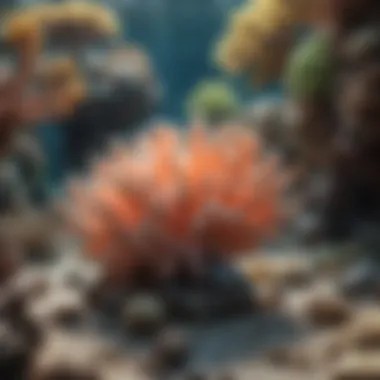

- Loss of Habitat: Trees are crucial for numerous species, providing essential shelter and food. Without these habitats, many animals face extinction.
- Disruption of Ecosystems: Forests serve as complex ecosystems. The removal of trees can destabilize these networks, leading to the decline of species dependent on forest habitats.
- Increased Carbon Emissions: Cutting down trees releases stored carbon dioxide back into the atmosphere, further amplifying climate change and its impacts on wildlife.
In summary, deforestation is a significant driver of climate change that directly affects wildlife survival.
Pollution and Wildlife
Pollution, particularly from carbon emissions, presents another layer of complexity concerning wildlife. It encompasses various forms, including air, water, and soil pollution, all of which can harm animal populations.
- Air Quality: Increased carbon emissions lead to poor air quality, affecting the health of wildlife. Species that rely on clean air can suffer from respiratory issues and other health problems.
- Water Contamination: Polluted run-off from urban areas and agricultural lands can enter water bodies, harming fish and other aquatic life. Additionally, these pollutants can disrupt reproductive systems within aquatic ecosystems.
- Soil Degradation: Soil pollution can affect plant growth, leading to less food available for herbivores, subsequently impacting carnivores in the food chain.
Pollution serves as a reminder of the interconnectedness of ecosystems and the lasting impact of human actions. Tackling pollution and its links to climate change is crucial for safeguarding wildlife.
"Reducing our carbon footprint isn’t just about saving energy; it's about ensuring a future where wildlife can thrive."
Overall, addressing the carbon footprint is vital for effective wildlife conservation efforts. This involves understanding both the direct and indirect effects of our actions on the environment.
Ecological Imbalances
Ecological imbalances represent a critical area of concern within the discourse of climate change's effects on wildlife. As ecosystems are disrupted by rising temperatures, altered precipitation patterns, and more frequent natural disasters, the interconnectedness of species and their habitats becomes increasingly fragile. Understanding these imbalances is essential for recognizing the broader implications this has on biodiversity and conservation efforts, which are at risk without immediate attention.
Impact on Food Chains
Food chains are foundational to the stability of ecosystems. They illustrate the direct relationships between species, where organisms depend on one another for survival. As climate change induces shifts in habitat and resource availability, the entire structure of food chains may be altered. For example, warming oceans affect the breeding cycles of fish, which can lead to reduced populations. Birds relying on these fish for food may, in turn, experience declines in their own numbers due to food scarcity.
This cascading impact is not limited to aquatic ecosystems. In terrestrial environments, changes to plant life due to climate variability can affect herbivores, which then influences predators higher on the food chain. Disruption in any one part can lead to a domino effect, resulting in the potential collapse of local ecosystems.
"The health of food chains is indicative of the overall resilience of ecosystems to climate change."
Population Dynamics
Population dynamics, which encompass changes in the number of individuals within a species, are significantly influenced by climate change. Changes in temperature, precipitation, and natural habitats lead to stresses that can reduce birth rates or increase mortality rates. Some species may adapt by migrating to new areas where conditions are more favorable. However, not all species can migrate effectively or have the resources to adapt quickly. For example, amphibians and other sensitive species often struggle to cope with rapid environmental changes.
In addition, population imbalances arise as some species thrive under these changing conditions while others decline. This can result in invasive species becoming more prominent, further threatening native species. Such shifts can alter the population structure and diversity within local environments, leading to a less resilient ecosystem overall.
Conservation Challenges
Conservation challenges are critical to understand in the broader context of climate change's effects on wildlife. These challenges do not only encompass the immediate consequences of habitat destruction, but they also reflect the systemic barriers that impede effective conservation efforts. Climate change exacerbates many existing threats to wildlife, from warming temperatures to shifts in precipitation, thereby affecting the delicate balance within ecosystems. Significant emphasis must be placed on addressing these challenges, as the survival of many species hangs in the balance.
Funding Gaps in Conservation
Funding is a cornerstone of effective conservation efforts. However, one of the notable constraints faced by conservation projects is the consistent gap in funding. Organizations working to protect wildlife often find themselves with limited resources. This hinders the scope of research, habitat restoration, and protection initiatives. Limited funding can lead to several critical issues:
- Insufficient Research: A lack of scientific studies leaves many conservation strategies untested.
- Inadequate Management: Without proper financial resources, wildlife management efforts become ineffective, which exacerbates threats to vulnerable species.
- Delayed Response: In times of urgent action, such as during species declines or habitat loss, immediate funding gaps can impede timely interventions.
These challenges call for innovative funding solutions, including public-private partnerships, grants, and engagement from local communities. Increased awareness and advocacy are essential to direct more resources towards wildlife conservation.
Policy and Legislative Issues
Policies and legislation play a significant role in shaping conservation efforts. Nonetheless, many policies remain ineffective in addressing the urgent needs posed by climate change. Several issues contribute to this situation:
- Outdated Legislation: Many existing laws do not reflect the current realities of wildlife conservation and climate science, leading to ineffective protections.
- Fragmented Policies: Conservation efforts often suffer from a lack of coherence across jurisdictions. This means that wildlife may not receive uniform protection over larger areas, complicating recovery efforts.
- Political Resistance: Conservation initiatives can face obstacles due to differing political interests, leading to resistance in adopting necessary policies.
Addressing these legislative hurdles is vital for establishing a coherent framework that can adapt to rapidly changing environmental conditions. There is a pressing need for policies that incentivize conservation actions and prioritize biodiversity.
"Effective conservation requires an acknowledgment of both funding and policy deficiencies, which can undermine the resilience of ecosystems in the face of climate change."
As climate change continues to threaten wildlife, tackling these conservation challenges will be increasingly important. By securing better funding and reforming policies, we can better support the initiatives needed to protect diverse species and their habitats.
Strategies for Mitigation
Mitigation strategies are crucial in addressing the impact of climate change on wildlife. As ecosystems face unprecedented pressures, it is imperative to implement effective methods that not only support wildlife but also aim to restore ecological balance. This section discusses the significance of these strategies, focusing on ecosystem restoration and sustainable conservation practices.
Restoration of Ecosystems
Restoring ecosystems is a vital mechanism to counteract the adverse effects of climate change. Healthy ecosystems provide essential services that support wildlife, such as habitat, food sources, and resilience against climate impacts. The act of restoration can involve enhancing degraded areas or reintroducing native species that have been lost due to habitat destruction. Careful planning is needed to ensure that restoration efforts align with the specific needs of local wildlife.
One successful approach is the rewilding movement, which emphasizes allowing nature to take its course while providing minimal intervention. Rewilding can lead to increased biodiversity, as it enables species to thrive in a more natural environment. Furthermore, restored ecosystems often serve as carbon sinks, helping to reduce greenhouse gases in the atmosphere.
Key aspects to consider in ecosystem restoration include:
- Engaging local communities in restoration projects to ensure the sustainability of these efforts.
- Monitoring ecological changes to measure the impact of restoration activities over time.
- Utilizing native species for replanting to enhance the compatibility of restored habitats with local wildlife.
Sustainable Practices in Conservation
Sustainable practices in conservation are essential to protecting wildlife as climate change continues to evolve. This approach demands a balance between human needs and the preservation of wildlife habitats.
Some sustainable practices include:
- Promoting Sustainable Land Use: Implementing agricultural methods that minimize habitat loss and soil degradation. Techniques such as agroforestry and permaculture not only protect biodiversity but also enhance productivity.
- Reducing Pollution: Industries and urban areas should adopt cleaner technologies that decrease their ecological footprint. For example, reducing plastic waste is critical, as it significantly impacts marine and terrestrial species.
- Fostering Community Awareness: Educating local populations about the significance of biodiversity and climate change helps build a culture of conservation. Engaging communities in conservation efforts not only raises awareness but also ensures a more profound commitment to sustainable habits.
By employing sustainable practices, societies can create synergy between economic development and wildlife conservation. The overall benefit is a more resilient ecosystem capable of withstanding the pressures of climate change.
"Mitigation is not merely an option; it's a necessity for the survival of countless species facing climate threats."
Role of Technology in Conservation
The integration of technology in conservation efforts plays a vital role in mitigating the impacts of climate change on wildlife. Technology enhances the capability to monitor ecosystems, manage data, and implement effective conservation strategies. With the rising challenges posed by climate change, adopting technological solutions becomes essential for conservationists, researchers, and policymakers. The benefits of utilizing technology in conservation are numerous, including improved data collection, greater efficiency in resource management, and enhanced collaboration across different sectors. As we navigate the complexities of wildlife conservation in an era of rapid environmental changes, the role of technology cannot be understated.
Remote Sensing and Monitoring
Remote sensing involves collecting data from a distance, typically using satellite imagery and aerial drones. This method is invaluable in conservation as it allows for large-scale monitoring of wildlife habitats without disturbing the ecosystems. The benefits of remote sensing are clear; it enables researchers to track habitats, assess changes over time, and identify areas under threat from climate change.
For instance, satellite data can indicate shifts in vegetation cover, revealing how ecosystems are changing due to factors such as rising temperatures or altered precipitation patterns. This information is crucial for understanding the distribution of species and their responses to environmental shifts. With the ability to provide real-time data, remote sensing aids in making informed decisions that contribute to effective wildlife management.


- Improved habitat mapping.
- Timely identification of illegal activities.
- Efficient monitoring of endangered species.
This technology not only saves time and resources but also provides a comprehensive view of conservation areas, allowing for targeted actions that support ecosystem resilience.
Data Analytics for Wildlife Protection
The use of data analytics in conservation has grown significantly, allowing organizations to process large datasets collected from various sources, including remote sensing tools, field surveys, and citizen science initiatives. Through advanced analytics, conservationists can uncover patterns and insights that inform management decisions.
Data analytics facilitates:
- Species Tracking: Understanding migration patterns and behavior shifts as wildlife adapt to changing climates.
- Habitat Suitability Modeling: Predicting how different species might fare in future climates based on current data around temperature, precipitation, and habitat changes.
- Risk Assessment: Identifying populations at high risk of extinction and prioritizing conservation efforts effectively.
Leveraging tools such as machine learning and geographic information systems (GIS) enhances these analytical processes. Collecting and analyzing this information is essential in combating the challenges posed by climate change. Without data-driven decisions, conservation efforts may not align with actual wildlife needs or emerging trends.
"Technology, when harnessed effectively, can be a game-changer in enhancing our understanding of wildlife responses to climate change and reshaping conservation strategies for future sustainability."
In summary, the role of technology in conservation is multifaceted. Remote sensing enhances monitoring capabilities, while data analytics provides critical insights into wildlife protection. Collaborating these technological advances with traditional conservation methods creates a holistic approach needed to address the pressing threats posed by climate change.
International Cooperation and Agreements
International cooperation and agreements to address climate change are crucial. The effects of rising temperatures, unpredictable weather patterns, and biodiversity loss cannot be tackled by individual nations alone. Collaborative approaches enable countries to share resources, knowledge, and technologies while creating a united front against climate change impacts on wildlife. The shared goal of sustaining biodiversity necessitates partnerships spanning political borders.
Global Treaties and Their Impact
Global treaties serve as legal frameworks facilitating international commitments to combat climate change. Prominent examples include the Paris Agreement and the Convention on Biological Diversity. These treaties not only commit nations to reduce greenhouse gas emissions but also aim to protect vulnerable species and habitats.
The impacts of these treaties are profound. They can lead to increased funding for conservation projects, standardized monitoring methods, and shared climate data across nations. For instance, the Paris Agreement encourages countries to set and meet specific emissions targets, which can help mitigate habitat loss caused by climate change. In addition, these global commitments often result in the establishment of protected areas and the development of conservation strategies specifically designed to counteract climate-related threats to wildlife.
"Cooperation on international treaties provides a framework for nations to unite efforts in conserving wildlife and natural resources amid climate emergency."
Regional Collaboration Efforts
Regional collaboration efforts complement global treaties by addressing localized issues and facilitating targeted strategies. These collaborations can take the form of joint initiatives among neighboring countries aiming to protect shared habitats and migratory routes. For example, various African nations have engaged in efforts to combat poaching and preserve the habitats of endangered species through committed partnerships.
Regional groups often focus on immediate climate impacts that are distinctly felt in specific areas, like rising sea levels affecting coastal wildlife or forest fires in Mediterranean countries. By sharing best practices and resources, regions can develop more effective responses, creating biodiversity corridors or establishing joint monitoring programs.
In summary, all forms of international cooperation are essential to effectively address and mitigate the adverse impacts of climate change on wildlife. The synergy created by global treaties and regional collaborations lays the groundwork for comprehensive conservation approaches, ultimately benefiting diverse species worldwide.
Public Awareness and Education
Raising public awareness about climate change and its impact on wildlife is vital for fostering a more informed society. Education galvanizes individuals to recognize their role in ecological preservation, promoting a culture of stewardship toward the environment. It can illuminate the complexities of climate change effects, making the science accessible and relatable to people from different backgrounds.
Knowledge about wildlife conservation, ecological balance, and the implications of climate change can influence public behavior. For instance, when citizens understand how habitat loss affects local species, they are more likely to support protective measures. This shift in mindset often leads to increased community involvement in conservation activities. The potential benefits of enhanced environmental education include the promotion of sustainable practices and the engagement of youth in transformative initiatives that can shape future policies.
Moreover, public campaigns aimed at raising awareness can serve as catalysts for change at local, national, and global levels. They can inspire individuals to participate in efforts such as tree planting, recycling programs, and habitat restoration activities. Simply understanding the fragility of ecosystems can change consumption patterns.
"Awareness is the first step toward action. Without it, change cannot happen."
Importance of Environmental Education
Environmental education equips individuals with knowledge about ecological systems and the interdependence of species, including humans. It offers insights into how climate change alters these systems, affecting biodiversity and ecosystem services. The ultimate goal of such education is to foster a sense of responsibility and urgency among people.
When students learn about the harsh realities faced by imperiled species, they develop empathy and an intrinsic motivation to advocate for these animals. Many educational programs include field trips and hands-on activities that connect learners with nature, creating personal experiences that deepen the understanding of environmental stewardship.
Furthermore, effective environmental education can lead to informed decision-making. It enhances an individual’s ability to assess personal impact on the environment, inspiring choices that contribute to sustainability.
Volunteerism in Conservation Efforts
Volunteering is another essential element of public engagement in wildlife conservation. Citizen participation goes beyond individual efforts, as community-driven initiatives often address larger environmental challenges. Volunteers help with tasks like wildlife monitoring, habitat restoration, and educational outreach.
Involvement in volunteer programs connects individuals with experts, fostering mentorship and skill development. Participating in conservation activities not only empowers volunteers but also enriches their understanding of ecological dynamics. This engagement often leads to more substantial contributions toward wildlife protection and habitat preservation.
Moreover, volunteerism acts as a bridge between communities and conservation organizations. Local volunteers can help tailor initiatives to meet specific needs, often increasing the effectiveness and success of conservation efforts.
Future Outlook
Understanding the future outlook of wildlife amidst climate change is crucial for several reasons. It provides insights into the potential trajectories that various species might take as environmental conditions evolve. Predictions not only help in assessing vulnerability but also allow conservationists to prioritize efforts in areas where they can make the most significant impact. Moreover, ongoing research feeds into these predictions, facilitating a more nuanced understanding of the intricate dynamics at play.
Predictions for Wildlife under Climate Change
Climate models suggest that wildlife will face severe challenges as climatic conditions shift. Many species may be required to relocate to find suitable habitats. This migration can lead to increased competition for resources, potentially resulting in local extinctions. Key ecosystems, such as coral reefs and forests, could face profound transformations, altering the entire food web.
Some predictions indicate that certain species could become increasingly resilient, adapting to their changing environments. However, this adaptability often has limits. For instance, polar bears are becoming more dependent on increasingly scarce ice for hunting seals. As these habitats dwindle, their survival becomes questionable.
Key predictions include:
- A likely increase in the frequency of habitat loss for many species due to rising temperatures.
- Shifts in seasonal behaviors, such as breeding or migration, which can disrupt established ecological patterns.
- Increased risks of disease as animals come into closer contact with one another and human populations, leading to potential outbreaks.
"The predicted transformations will not only affect individual species but also entire ecosystems, underlying the intricate connections within nature."
Importance of Ongoing Research
The significance of ongoing research cannot be overstated. As variables of climate change continuously evolve, so too must the methodologies and assumptions underlying conservation actions. Research provides the data needed to support predictions regarding wildlife responses to climate realities.
Key areas of focus include:
- Monitoring species populations using advanced technology to track changes in behavior and habitat usage. This data informs effective conservation strategies.
- Understanding physiological changes that climate change can induce in various species, which is essential for predicting future vulnerabilities and adaptive capabilities.
- Investigating the impacts of climate interactions with other stressors, such as pollution or habitat destruction, to gauge their cumulative effects on wildlife health.
End
One significant aspect to consider is the increased rate of species extinction. Animals and plants that cannot adapt to rapid environmental shifts may experience population declines, potentially leading to extinction. This loss of biodiversity not only diminishes the beauty of our planet but can also disrupt ecological balance, which is crucial for maintaining healthy ecosystems.
Furthermore, the physiological changes observed in wildlife—such as alterations in metabolism and reproductive success—are indicative of the broader biological roadblocks posed by climate change. These implications can have cascading effects throughout the food web, ultimately affecting human beings as well. Understanding these shifts can aid in developing strategies for conservation and population management.
The importance of ongoing research cannot be overstated; it can provide insights necessary for devising effective strategies to mitigate these negative impacts. Continued monitoring of wildlife populations and habitats is essential. Moreover, fostering awareness among the public about these urgent issues broadens the support for conservation initiatives and interventions, ensuring that biodiversity is prioritized.
In addition, collaboration on both local and global scales is vital when addressing these challenges. International treaties and regional partnerships can foster the sharing of knowledge and resources necessary for effective action against wildlife degradation.
In summary, the implications of climate change on wildlife are profound and multidimensional, affecting not just the animals themselves, but also the systems within which they exist. It is imperative for stakeholders—scientists, politicians, and the general public—to grasp these complexities to effectively navigate the path forward for wildlife preservation and ecological resilience.



